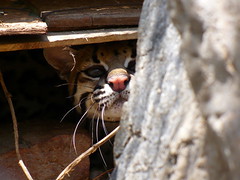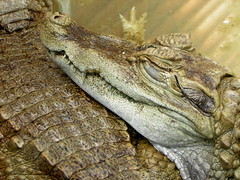More than 70 Andean women from six Peruvian cities took part in the final stage of the second annual Mamacha national championships.
Category: "Traditions"
Re-enactment in Ayacucho – The battle that liberated a continent
On the 10th of December of this year, 185 years passed since Peru won a battle that decisively ended any hope for a Spanish presence in South America. At 3,500 above sea level, on the field of battle of the Pampa de Quinua, thousands gathered to take part in a huge recreation in honour of this occasion.
Barin Bababo: Shipibo Konibo: Cosmovision of an Amazonian People [Featured]
I wrote a short time ago about the Shipibo people, an indigenous Amazonian tribe, some of whom now live on the polluted river Rímac in Lima’s desert. (Alejandro also introduced us to the River Rimac Project)
Here, Alejandro tells us more about the Shipibo people living in Rimac, and their fascinating artwork.
Ruins of Pachacamac
The history of pre-Hispanic Lima is deeply entwined with Pachacamac. Worshipped across the central Andes since before the Inca conquest, the powerful creator god Pacha Kamaq is even revered today, almost 500 years after the Spanish conquest by Catholics in Lima. Today this powerful being has taken shape as the Cristo Morado and has been absorbed into Catholicism, and just as he is today, this ancient figure was also known as the Lord of the Earthquakes.
Carnival in Cajamarca
It’s carnival time in Cajamarca!!
…a period of song, dance and water fights. This carnival is known to be the most wild in the country and perhaps the second most famous on the continent after the one that takes place in Brazil. Whether a sunny day or not, dressing for rain would be a very good idea – expect to br drenched in buckets of water.
The Tumi
The Tumi is a ceremonial knife used by ancient Peruvian cultures as a means to perform sacrifices. It consists of two parts, a semi-circular blade and a handle often representing the northern Peruvian God Naymlap. The ceremonial knife is usually made from solid gold, though sometimes bronze or copper, these metals representing the sun, from which Andean cultures believed all human life descended.
Noche Buena and The Peruvian Christmas
Those of us from the Northern Hemisphere probably associate Christmas with pine trees, mistletoe and, oh yeah, cold weather. However, for those countries located below the equator, the holiday occurs right at the start of the summer season. Peru is one of the countries that have the luck to be able to celebrate this holiday in mild temperatures. The differences don’t stop there as much of the way in which Peruvians celebrate Christmas is unique, especially when it comes to what foods they eat.
Puno’s great party: Virgen de la Candelaria
They say that only the carnival in Rio-Brasil and the carnival in Oruco-Bolivia compare to this, the biggest party in Peru in the city with the most traditional dances in the world – Puno.
Superstitious New Year
Peru has dozens of superstitions that are believed unquestionably – the most colourful being at the ones to bring luck, health and money in the new year.
Quechua street names
It’s nice to walk around Cusco and see street names in the Quechua language, the language of the Incas. These two are particularly fun to pronounce.
Cabanas and Collaguas
The Cabanas and Collaguas are, or rather were, two distinct ethnic groups in the Colca area. Before Spanish conquest and intervention it was not permitted for the two groups to intermarry. The two groups distinguished themselves by creating different head deformations, one group had tall and thin skulls and one had fat and long skulls. They did this by tying two pieces of wood to the babies head until the affects were irreversible.
Perú Negra – Black Peru
Afro-Peruvians contribute significantly to the culture of Peru, particularly in music.
Afro-Peruvians make up about 6% of the population and although settled throughout the country along with the spanish conquistadors, can be found mainly along the costal region.






![Food business taking off in Peru [Featured]](http://farm3.static.flickr.com/2461/3616418081_a058a9f62e_m.jpg)

